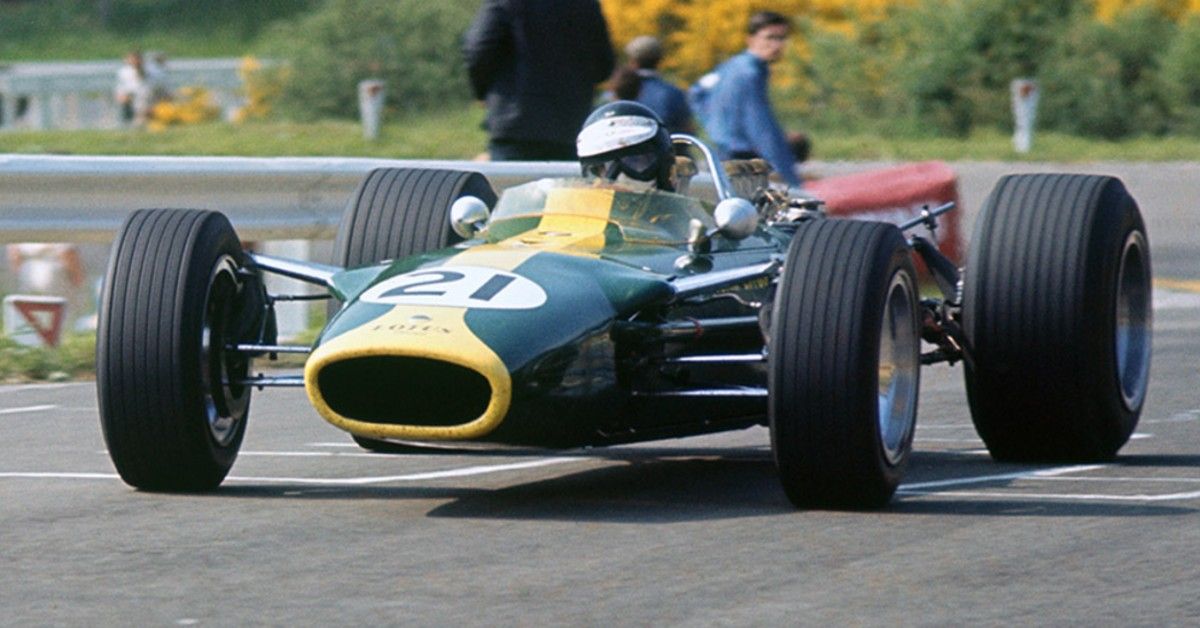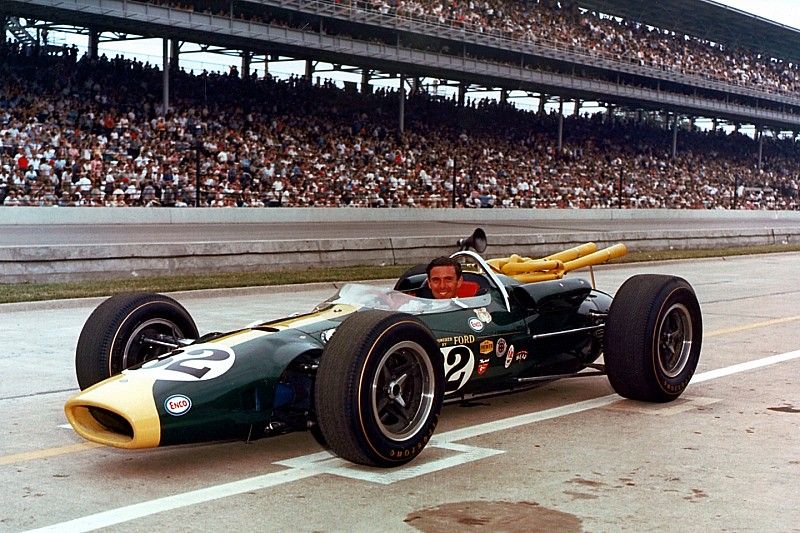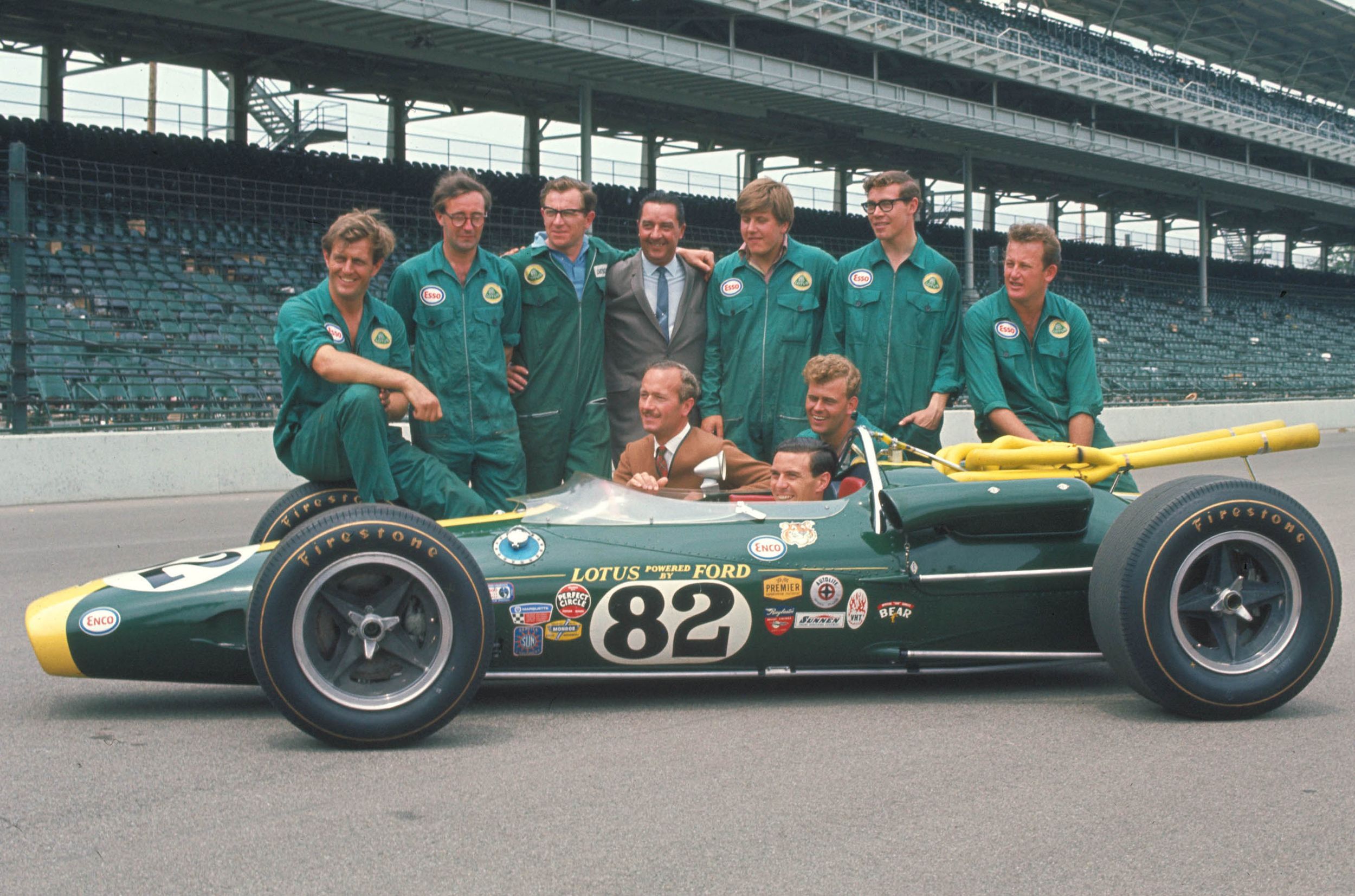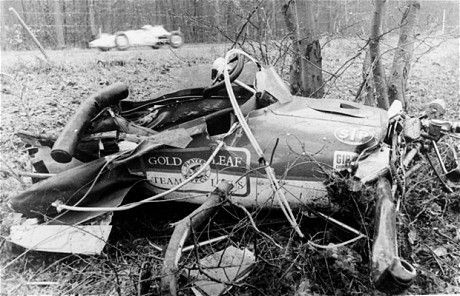On the 7th of April, 1968, a racing driver was killed in the Formula 2 race in Hockenheim, Germany. During that time period, people were not shocked by a race car driver’s death because the sport was known for such dangers back then. He was one of 127 racing drivers who would die that year while racing. But this time, the world of motorsport was hit hard because the driver who died on the 7th of April was perhaps the greatest race car driver of all time, and his name was James Clark Jr.
When we think about Formula One racers, we often come around names like Ayrton Senna, Michael Schumacher, Juan Manuel Fangio, Lewis Hamilton, and many more. Still, it’s rare to mention this Scottish F1 driver Jim Clark among them. He is one of the most overlooked drivers in the history of motorsport. At the age of 32, this man had already won 25 Grand Prix races out of 73, putting him behind only Juan Manuel Fangio (24 wins from 52), and Alberto Ascari (13 wins from 33). He is easily ahead of the rest of the racers to this day. Moreover, he has achieved more Grand Prix pole positions (33) than any other driver.
How Did James Clark Get Into Racing?
James Clark grew up in the Fife town of Kilmany. Clark was the youngest out of five and the only boy in his farmer family. James was a very soft-spoken man who, at the time, was described as being quite shy. Whether it was racing or everyday life, he liked to look and talk like a professional at all times. The two-time world champion James Clark made his first step in 1960 with a Lotus at the age of 24 at Dutch Grand Prix at Zandvoort.
It wasn’t a scorching start for Mr. Clark in the F1 world, but he managed to finish fifth in his second outing at the famous 8.7-mile Spa-Francorchamps circuit in Belgium. The Flying Scot won his first Belgian Grand Prix held at Spa-Francorchamps on the 17th of June 1962 in his swift and agile Lotus 25 designed by Colin Chapman. What is more impressive is that he won four successive Belgian GP, which was said to be the most brutal and dangerous Grand Prix in the championship at the time.
The Peak Of His Career
In 1963 Jim Clark of Scotland became World Champion with a stunning performance, winning seven out of ten GP’s with seven pole positions. Jim Clark won first place, but he did so by leading every lap in 1965 in the Formula One and Tasman series. The following years were quite slippery for the Lotus cars, but they were in the good hands of Clark as he managed to obtain the third position with three unpredictable cars in the 1967 championship. That year, people saw the extraordinary performance in Clark at Monza and possibly the best performance in a Grand Prix car.
Clark won the Indianapolis 500 in 1965, leading the race for 190 of 200 laps with an average speed of over 150 MPH. He became the first non-American in almost a half-century to win the race. It was the only time a man has won both the Indy 500 and F1 Championship in the same year. He also holds the record of being the outright leader of the highest number of grand slams at 8, two more than Lewis Hamilton. Jim Clark also holds the record of the highest percentage of laps led over a single season, which was over 71.47 % of all of the laps of the 1963 season.
In the 1963 Belgian Grand Prix, Clark came from eighth on the grid to win the race and finish almost 5 minutes ahead of second-place McLaren. That alone should be impressive, but when he was leading, the gear lever of his car started to give up. So, Clark drove the rest of the race at 160 MPH in the wet with one hand on the steering wheel and the other hand holding the gear lever to prevent it from falling out, which is simply astounding. If that doesn’t count as an impossible victory, what does?
Jim Clark's Unfortunate Demise
In 1968, Jim Clark won his last GP in South Africa. On the 7th of April, four months after the South Africa GP race, Jim Clark died in a racing accident at the Hockenheimring in West Germany. He died not in an F1, but a Formula Two race, at the age of 32. When Clark died on the circuit’s forested section, there were no spectators or cameras present. The only eyewitness was a german track officer who reported the car crashing in the woods. He suffered a broken neck, a skull fracture and died before reaching the hospital.
Nobody was ready to believe that a driver as brilliant and efficient as Jim could make a mistake like this and end up in this kind of an accident. The authorities later found that a deflated rear tire was the reason behind this accident. Lotus founder and a close friend Colin Chapman rushed to the accident zone to find the chassis of the Lotus 48 beside a tree and found the engine and the gearbox around thirty yards away from the car.
Jim Clark may no longer be with us, but the legend still stays with us. The world honored him by placing a statue of him at his birthplace in Kilmany, Scotland, in his memory. In 1991 another racing legend Ayrton Senna made a special pilgrimage at the Loretto School in Musselburgh to pay his respects and was quoted saying that Clark was his boyhood hero.
Five-time Driver’s champion Juan Manuel Fangio (the highest win percentage of all time) has complimented Jim Clark by saying, “In my opinion, Clark is the greatest racing driver ever,” which was substantial coming from him. I think the world would agree with me when we say that Jimmy Clark was the most naturally gifted racing driver of all time.




